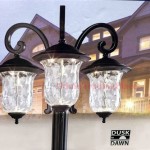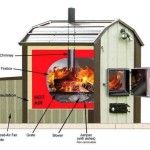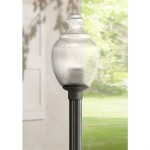How To Paint Outdoor Ceramic Pots
Painting outdoor ceramic pots offers a simple yet effective method for enhancing garden aesthetics and personalizing outdoor spaces. Whether revitalizing old pots or adding a unique touch to new ones, a fresh coat of paint can dramatically transform their appearance. This process involves several key steps to ensure a durable and visually appealing finish.
The first step involves thoroughly cleaning the ceramic pots. This removes any dirt, debris, or previous paint that could interfere with the adhesion of the new paint. A stiff brush and a mixture of warm water and mild detergent are typically sufficient for this task. For stubborn dirt or existing loose paint, a wire brush can be used. After scrubbing, rinse the pots thoroughly with clean water and allow them to dry completely.
Once the pots are dry, the next step is to apply a primer specifically designed for unglazed terracotta or ceramic surfaces. Primer creates a smooth base for the paint to adhere to, improving coverage and durability. Using a high-quality primer also helps prevent the paint from chipping or peeling over time, especially in outdoor conditions. Apply the primer evenly across the entire surface of the pot, paying close attention to any intricate details or textured areas. Allow the primer to dry completely according to the manufacturer's instructions.
With the primer dry, painting can commence. Exterior-grade acrylic paint is recommended for its durability and weather resistance. Various application methods are suitable, including brushes, rollers, or spray paint. Brushes offer greater control for intricate designs, while rollers provide a smoother finish on larger, flat surfaces. Spray paint is useful for achieving a uniform coat quickly, particularly on pots with complex shapes. Regardless of the chosen method, apply the paint in thin, even coats. Multiple thin coats are preferable to one thick coat, as they minimize the risk of dripping and ensure a more even finish. Allow each coat of paint to dry completely before applying the next.
The number of paint coats required depends on the desired opacity and the color being used. Lighter colors may require more coats to achieve full coverage. It's important to follow the paint manufacturer's instructions regarding drying times between coats and overall curing time. Patience in allowing each coat to dry thoroughly contributes significantly to the final quality and longevity of the painted finish.
For those seeking a more distressed or vintage look, sanding can be incorporated after the paint has dried. Lightly sanding certain areas, such as the rims or raised details, can create a worn appearance. This technique can add character and visual interest to the pots, particularly when using multiple paint colors.
Protecting the painted surface is crucial for maintaining its appearance and extending its lifespan, particularly in outdoor environments. Applying a sealant designed for exterior use creates a protective barrier against the elements, including rain, sunlight, and temperature fluctuations. Sealants are available in various finishes, from matte to glossy, allowing for customization based on personal preference. Apply the sealant evenly across the entire painted surface, ensuring complete coverage. Following the sealant manufacturer's instructions regarding drying time is essential.
While ceramic pots are naturally durable, the addition of paint and sealant can affect their breathability. This can be particularly important for plants sensitive to excess moisture. To address this, drainage holes at the bottom of the pot are crucial. These holes allow excess water to escape, preventing root rot and promoting healthy plant growth. Ensure the drainage holes remain clear and unobstructed after painting and sealing.
Regular maintenance can further prolong the life of painted ceramic pots. Periodically cleaning the pots with a damp cloth removes dust and dirt, helping to maintain their appearance. Inspecting the painted surface for any chips or cracks and touching them up promptly prevents further damage and maintains the protective barrier. Storing the pots in a sheltered location during harsh weather conditions, such as freezing temperatures or prolonged heavy rain, can also extend their lifespan. By following these steps, individuals can enjoy beautifully painted ceramic pots that enhance their outdoor spaces for years to come.
Different types of ceramic pots may require slight variations in the painting process. For instance, highly glazed pots might necessitate light sanding before priming to ensure proper paint adhesion. Terracotta pots, known for their porosity, might benefit from an initial sealant application before priming to prevent excessive paint absorption. Understanding the specific characteristics of the ceramic material allows for adjustments in the painting process, ensuring optimal results.
Choosing appropriate paint colors is another important consideration. Lighter colors reflect sunlight and help keep the soil cooler, benefiting plants in hot climates. Darker colors absorb more heat, which can be advantageous in cooler regions or for plants that thrive in warmer temperatures. Considering the surrounding environment and the specific needs of the plants helps in selecting the most suitable paint colors.

Spray Painting Ceramic Pots

How To Paint Clay Pots

Spray Painting Ceramic Pots

Spray Painting Ceramic Pots Paint

How To Paint Terracotta Pots Step By Get Busy Gardening

Patio Refresh Outdoor Diy How To Paint Ceramic Pots

How To Paint Flower Pots For Outdoors Easy Fall Front Porch Decorating

Hand Building Printed Xxl Mughal Painting Pendi Outdoor Planter Ceramic Pot

Spray Painting Ceramic Pots

Spray Painting Ceramic Pots
Related Posts







